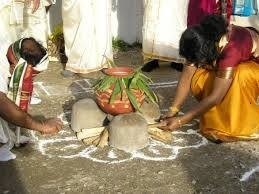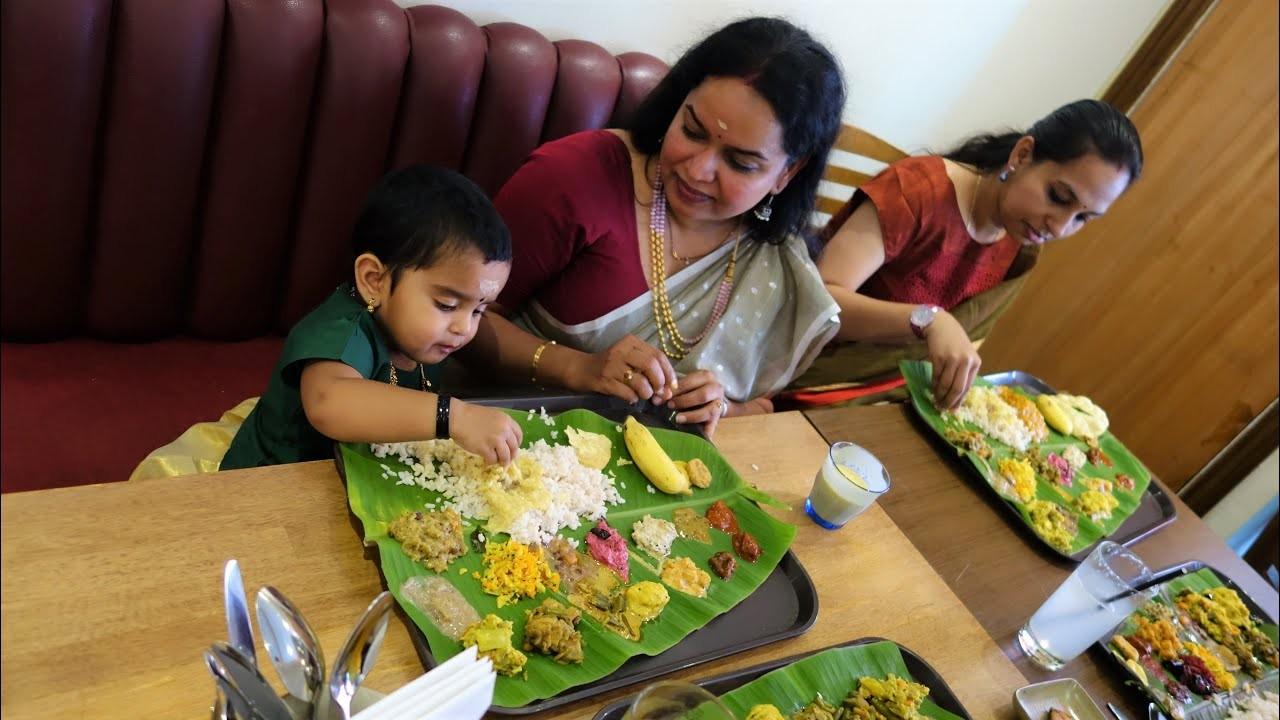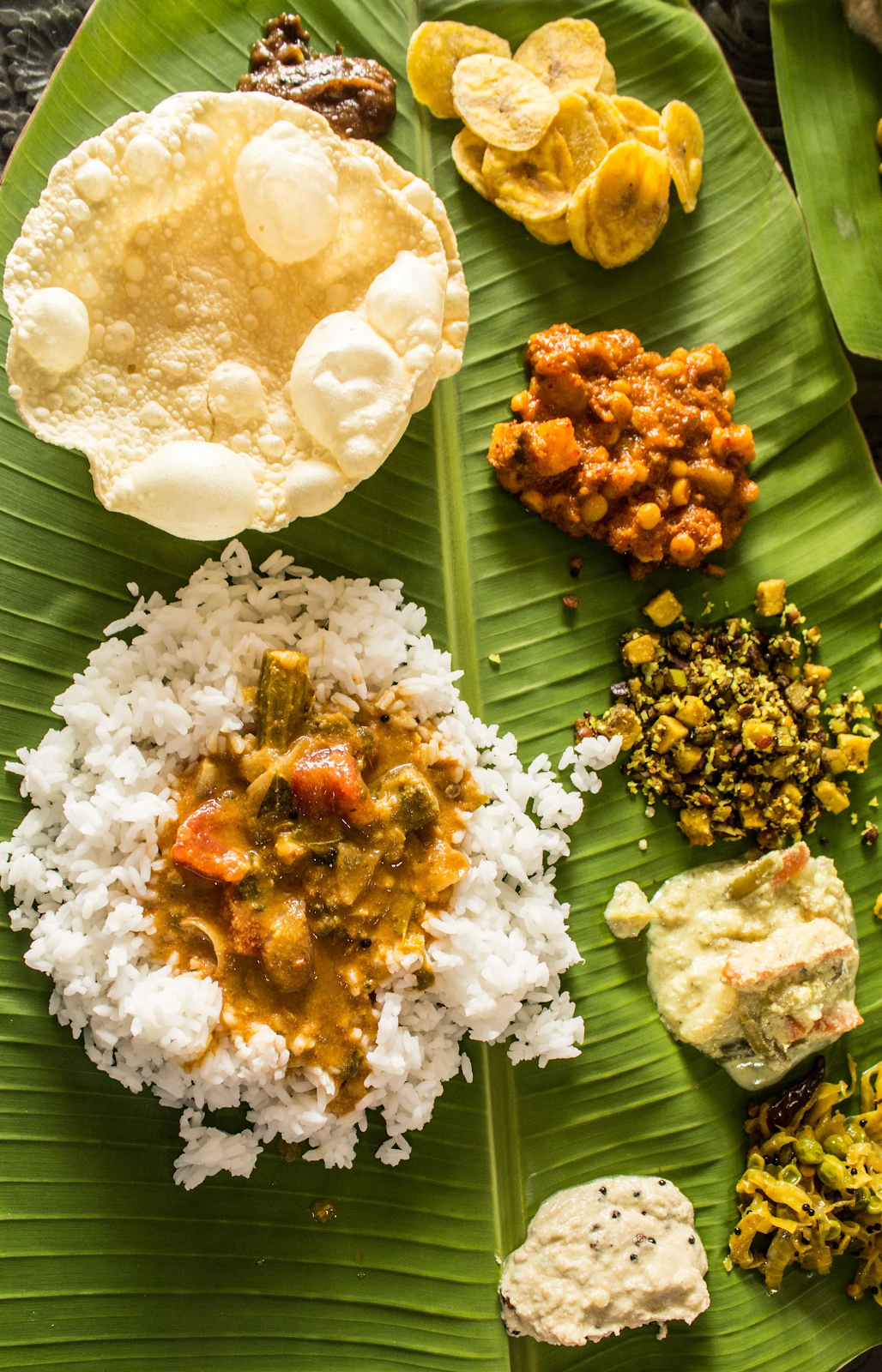"FOOD HABITS OF TAMILS" PART: 38 "முடிவுரை தொடர்கிறது" / "conclusion continuing" [தமிழிலும் ஆங்கிலத்திலும் / In English and Tamil]
நீங்கள் நம்பினாலும் நம்பா விட்டாலும், ஒவ்வோர் இனத்திற்கும் அதன் நிலம் சார்ந்த உணவு அடையாளங்கள் உண்டு . சமைக்கும் முறை, பரிமாறுதல், உண்ணும் விதம் என ஒவ்வொரு சமூகக் குழுவிற்கும் பல தனித் தன்மைகள் உள்ளன. அமெரிக்கப் பூர்வ குடிகள் மத்தியில் ஆய்வு செய்த பிரபல மானுடவியலாளர் பிரான்ஸ் போயஸ் [professor Franz Boas], “சாலமன் மீனை இவர்கள் சமைக்கும் வகையில் இருந்தே இவர்களின் சமூக அமைப்பையும், இவர்களுக்குள் உள்ள ஏற்றத் தாழ்வையும் புரிந்து கொள்ள முடியும்“ என்கிறார். இது தமிழ்ச் சமூகத்திற்கும் பொருந்தும்.
மனிதன் உணவினைச் சூடு - குளுமை, புனிதமானது - புனித மற்றது, குறிப்பிட்ட உணவு வகைகளின் மீதான விலக்கும் - விருப்பமும் எனப் பல வகையில் வலுப்படுத்தியுள்ளதற்குச் சூழலியல் காரணிகள் பொதுவாக அடைப்படையாய் உள்ளன. உதாரணமாக, வெவ்வேறு நாடுகளில் இருந்து தலைமைச் சமையற்காரர் நடத்தும் சமையல் ஒளி, ஒலி பரப்புகள் அந்தந்த நாடுகளின் அல்லது பிராந்திய சாப்பாட்டு விருப்பங்களை வெளிப்படுத்துகின்றன. இந்த சமையற்காரர்கள், தாம் செய்து காட்டிய உணவு மூலம், அவர்களின் வாழ்க்கை மற்றும் பின்னணியை படம் பிடித்து காட்டுகின்றனர்.
மனிதன் சமுதாயத்தின் ஒரு
உறுப்பு. எனவே, மனிதன் பேசும் மொழி, அணியும் ஆடை, உண்ணும் உணவு, வாழும் முறை, செய்யும்
பணி, அவன் எண்ணங்கள் ஆகியவை அவன் சார்ந்த சமுதாயத்தின் பண்பாட்டை பொதுவாக வெளிப்படுத்தும்
வாயில்களாகும். இந்த அடிப்படைத் தேவைகளில்
மிகவும் முக்கியமானது உணவு ஆகும். ஆனால், எதை உண்ணவேண்டும், எப்பொழுது உண்ண வேண்டும்,
எப்படி உண்ணவேண்டும் என்பதை அவனது பண்பாடுதான் சொல்லிக் கொடுக்கிறது. இங்கிலாந்து நாட்டைச்
சார்ந்தவர்கள், காலை உணவாக பொதுவாக முட்டை , பன்றி இறைச்சி [bacon], தொத்திறைச்சி
[sausage], போன்றவை அல்லது தீயில் சுட்ட (smoked Fish) மீனை உண்ணுவார்கள். அமெரிக்கர்கள்,
குளிர்ந்த தானியங்களை உண்ணு வார்கள். தமிழர்கள் காலை உணவாக, ஆவியில் வேகக்கூடிய, இட்லி,
இடியப்பம், பிட்டு போன்ற உணவுகளை உண்பார்கள். இவை அவரவர் பண்பாட்டிற்கு ஏற்ப அவர்களின்
உணவு வகைகள் அமைந்திருக்கின்றன என்பதைக் காட்டுகின்றன. அப்படியே, உண்ணும் நேரமும் உண்ணும்
முறையும் ஆகும். தமிழர்கள் இரவு 7 அல்லது 8 மணிக்குள் இரவு உணவை பொதுவாக உண்பார்கள்,
அத்துடன் பாரம்பரியமாக பாயில் உட்கார்ந்து, தரையில் பரப்பிய வாழை இலையில் உண்பார்கள்,
வரலாறு முழுவதுமே, உணவு சமைத்து அவர்களுக்கிடையில் பகிர்ந்து உண்ணும் போது, அந்த குறிப்பிட்ட
சமுகத்திற்கு இடையில் பிணைப்பும் பண்பாட்டு பகிர்வும் பொதுவாக ஏற்படுகின்றன.
நாம் எமது இளம் தலைமுறையினருக்கு,
எப்படி எமது பாரம்பரிய உணவுகளை சமைப்பது, அந்த உணவுகளுடன் இணைந்தியங்குவது போன்றவற்றை
சொல்லிக் கொடுக்கா விட்டால், அவர்கள் எம் பண்பாட்டுடன், எமது முன்னைய வாழ்வுடன் ஈடுபட முடியாமல் போய் விடும். குடும்பத்துடன், சமூகத்துடன்
உணவையும் உணவு சமைக்கும் முறைகளையும் பகிர்தல் மூலம் அவர்களுக்கு தமது பண்பாட்டை அறிய
வாய்ப்பு ஏற்படுகிறது. இதை நாம் குறைந்து மதிப்பிடக் கூடாது. பரப்பரப்பாக சென்று கொண்டிருக்கும்
இந்த உலகத்தோடு, நாமும் வேகமாக ஓடவேண்டிய காலக்கட்டத்தில் , உணவைப் பற்றி சிந்திப்பதற்கு
நேரம் கிடைப்பதில்லை. எனவே நமது வயிறு பசிக்கும்
போது அல்லது ஏதாவது உணவுப்பொருளை பார்க்கும் போது மட்டுமே நமக்கு சாப்பிடத் தோன்றுகிறது.
ஆகவே குறைந்தது, முதலாவது சந்திப்பு, குடும்ப கொண்டாட்டங்கள் அல்லது ஒரு முக்கிய பண்டிகை
நிகழ்வு போன்றவையை பாரம்பரிய உணவுகளுடன் இணைத்து மகிழ்ந்து கொண்டாடினால், அது எமது
பண்பாட்டு அடையாளத்தை மேலும் இருக்கமாக்கும்.
ஆகவே, பாரம்பரிய உணவு என்பதன்
பொருள், சுருக்கமாக, பல நூற்றாண்டுகளாக, ஆயிரம் ஆண்டுகளாக உட்கொள்ளப்பட்ட முழுமையான,
பண்டைய உணவு ஆகும். இது உனது தலைமுறை தலைமுறையாக உட்கொண்ட உணவு. இவை மிகவும் இலகுவானது.
இயற்கையாக வளர்ந்தவை அல்லது வளர்க்கப்பட்டவை. கவனமாக சிந்தனையுடன் தயாரிக்கப் பட்டவை.
இது எமது மூதாதையர்களை, தொழில்மயமாக்கப்பட்ட உணவு வருகைக்கு முன்பு, வரலாற்று காலம்,
மற்றும் வரலாற்றிற்கு முந்திய காலம் முழுவதும் ஊட்டிவளர்த்த ஒன்று ஆகும். அது மட்டும்
அல்ல, அவன் பண்டைக் காலத்திலிருந்தே 12 வகையான உணவு உட்கொ ள்ளும் பழக்கத்தை வைத்திருந்தான்
எனவும் அறிகி றோம். அவனது இந்த ரசனையே தனித்தன்மையாக உள்ளது. அவை அருந்துதல் [மிகக்
கொஞ்சமாக சாப்பிடுவது], உண்ணல் [பசி தீர சாப்பிடுவது], உறிஞ்சுதல் [நீர் கலந்த உணவை
ஈர்த்து உண்ணுதல்], குடித்தல் [நீரான உணவை பசி நீங்க உறிஞ்சி உட்கொள்ளுதல்] , தின்றல்
[பண்டங்களை மெதுவாக கடித்துச்சாப்பிடுதல்], துய்த்தல் [உணவை ரசித்து மகிழ்ந்து உண்ணுதல்],
நக்கல் [நாக்கினால் துழாவித்துழாவி உட்கொள்ளுதல்], பருகல் [நீர் கலந்த பண்டத்தை கொஞ்சம்
குடிப்பது], மாந்தல்[ரொம்பப் பசியால் மடமட வென்று உட்கொள்ளுதல்], கடித்தல் [கடினமான
உனவுப்பொருளை கடித்தே உண்ணுதல்], விழுங்கல் [வாயில் வைத்து அரைக்காமல் அப்படியே உள்ளே
தருள்ளுவது], முழுங்கல் [முழுவதையும் ஒரே வாயில் போட்டு உண்பது] போன்றவையாகும். இன்றைய
நவீன உலகில் பல சம்பிரதாயங்கள் மறைந்து கொண்டு வருகின்றன என்பது மறுக்க முடியாத உண்மை.
ஆடை அணிகளிலிருந்து, உணவு பழக்கம் வரை மாறுகின்றன. சில உணவுகள் இன்றைய தலைமுறையினருக்கு
தெரியாமலே போகிறது. ஆகவே அவைகளை கேட்டு, தேடி
அறிந்து கொள்ளுங்கள். இறுதியாக ஒன்றை கூறிவைக்க விரும்புகிறேன். "பதறாத காரியம்
சிதறாது" என்பார்கள். ஆகவே முடிந்த வரை மெதுவாகச் சாப்பிடுங்கள். இது உடலுக்கு
மிகவும் நல்லது. மேலும் சாப்பிடும்போது, உணவை சிறு சிறு துண்டுகளாக மென்று சாப்பிட்டால்,
உணவு விரைவாக ஜீரணமடைந்து திருப்தியளிக்கும். இப்ப இந்த நுற்றாண்டு, வாகை சூட வா /
2011 படத்தில் இருந்து ஒரு பாடலை கிழே தருகிறேன். அது, டீ, சுட்ட ஈரல், கோழி இறைச்சி,
கமஞ்சோறு, ரசம், தோசை, நூங்கு, போன்ற உணவுகளை தொட்டுச் செல்கிறது.
"சர சர சார காத்து வீசும்
போது
சார பாத்து பேசும் போது
சார பாம்பு போல நெஞ்சம் சத்தம்
போடுதே...
இத்து இத்து இத்து போன நெஞ்சு
தைக்க
ஒத்த பார்வை பாத்து செல்லு
மொத்த சொத்த எழுதி தாரேன்
மூச்சு உட்பட...
டீ போல நீ... என்ன ஏன்...
ஆத்துற
எங்க ஊரு பிடிக்குதா... எங்க
தண்ணி இனிக்குதா
சுத்தி வரும் காத்துல...
சுட்ட ஈரல் மணக்குதா
முட்டை கோழி பிடிக்கவா...
முறை படி சமைக்கவா
எலும்புங்க கடிக்கயில்...
என்ன கொஞ்ச நினைக்க வா
கம்மஞ்சோறு ருசிக்க வா...
சமைச்ச கைய கொஞ்சம் ரசிக்க வா
மொடகத்தா ரசம் வச்சு மடக்க
தான் பாக்குறேன்
ரெட்டை தோசை சுட்டு வச்சு
காவ காக்குறேன்
முக்கண்ணு நொங்கு நான் விக்கிறேன்
மண்டு நீ கங்கைய கேக்குற"
நன்றி -[கந்தையா தில்லைவிநாயகலிங்கம்,
அத்தியடி,
யாழ்ப்பாணம்]
"FOOD HABITS OF TAMILS"
PART: 38
"conclusion continuing"
Believe it or not, the
food that we eat provides a significant impression of who we are. Take, for
example, the increasingly popular Food Network, which broadcasts chefs from
around the country who spotlight their “unique perspectives on food” or regional
dining preferences. These chefs express their lifestyles and backgrounds
through the foods that they prepare. Whether Mediterranean, Indian or ancient
Japanese, the kinds of foods we choose to cook, eat, and share with our friends
present a picture of our cultural being.
Throughout most of
history, bonds and shared cultures have been created when meals are prepared
and shared. We need to bring the importance of community back into food. Our
heritage is often passed down and intimately bound up in the food we eat. Food
availability, climate and cooking techniques, evolved over many generations
have united individuals and groups of people into a distinct culture.
If we do not take the
time to teach the younger generations how to cook and interact with food they
will not be able to engage with their culture and bond with the past. Sharing
food and cooking techniques with family and friends gives them a chance to
learn about your culture. Giving the cultures a taste, a smell, a feeling can
increase respect and understanding between groups of people. The emotional
impact that sharing food has on individuals, family or groups of people cannot
be underestimated. The intimate first date, family celebration, business meal
or a major festive event helps develop relationships and if combined with
traditional food reinforces cultural identity.
In essence, traditional foods are those whole and ancient
foods that have been eaten for centuries and even millennia. They are the foods
that your great-great- great- great- great grandmother and grandfather would
have eaten. They are simple, naturally grown or raised, nutrient- dense,
thoughtfully prepared- which nourished our ancestors throughout history and
prehistory prior to the advent of the industrialization of food. The industrialization
of food largely began in the 19th century and entrenched itself in standard
diets of the 20th and 21st centuries. I am now giving below latest Tamil movie
songs from "Vaakai sooda vaa",
which tells about few present day tamilian foods.
"When the cloud of
misty mist breezes past
I run into a prattle
with “sir”,
My heart rattles and
hisses like a rat snake!,
(heart becomes restless
and excited)
My fray, frayed heart
needs your lustful gaze, to seam it back in position
And you take all that I
have in return, my breath even
Why do you caress me
like the hot tea,
Blown lukewarm by the
expert hands of tea vendor
Does my land fascinate
you? Does the water here taste like elixir?
Do you smell the aroma,
of the fried liver, wafting through the country side?
Should i cull a country
chicken, and serve you gourmet native dishes?
And when you feast on
the tendons, will it remind you of me?
Feel the pearl millet
that I served, and taste the hands which served you
I have prepared rasam
[a tamilian soup] to allure you,
I have prepared two
dosai and am waiting for you
I have kept three-eyed
palm fruit [palmyra fruit].
But you fool, want
Ganga river ?"
[from Tamil move, வாகை சூட
வா / Vaakai sooda vaa/2011]
Thanks-[Kandiah Thillaivinayagalingam,Athiady, Jaffna]
Ended














0 comments:
Post a Comment